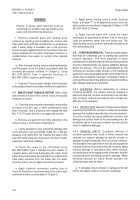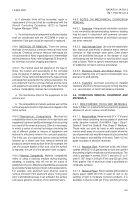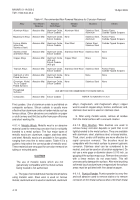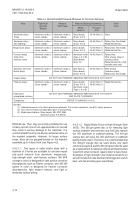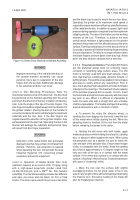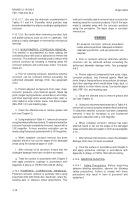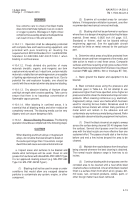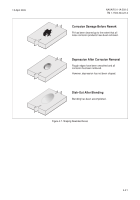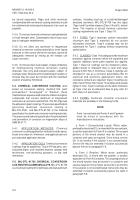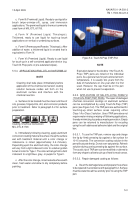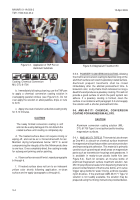TM-1-1500-344-23-2 - Page 93 of 240
4-17
NAVAIR 01-1A-509-2
TM 1-1500-344-23-2
15 April 2009
4-10. CORROSION REMOVAL PROCEDURES
.
4-10.1. WARNINGS AND CAUTIONS. The following
warnings and cautions shall be observed during
corrosion removal operations.
4-10.1.1.
Personal Protection.
WARNING
Many materials, such as copper alloys
(especially beryllium-copper), cadmium plate,
chromate conversion coatings, paints containing
chromates, lead, barium, and strontium, are
toxic. Use approved respirators, eye protection,
and skin protection. Take proper safety
precautions to avoid inhalation or ingestion
during corrosion removal. Wash hands
thoroughly before eating or smoking.
4-10.1.1.1. All powered corrosion removal procedures
create airborne particles. Respirators and eye protection
are required. Consult with the local Industrial Hygienist
(IH) concerning proper respiratory protection equipment.
Wear leather gloves when using metallic wools to
prevent hand injuries.
4-10.1.1.2. Do not use flap brushes, abrasive wheels,
or wire brush wheels above their authorized RPM.
These tools can fly apart, causing serious injury. Exercise
caution when using sharp or pointed tools to prevent
injury.
4-10.1.1.3. Depleted uranium is extremely toxic and
shall be worked only under a license from the Nuclear
Regulatory Agency (NRA). Machining or other work,
such as surface sanding, may be done only by the
licensee. No drilling, sanding, or other mechanical work
is permitted on depleted uranium by any service
maintenance activity. If the protective finish (plating)
which covers the depleted uranium is chipped, peeled,
or otherwise removed so the dark gray or black depleted
uranium (or uranium oxide) is visible, the part must be
returned to the licensee for rework or disposal. Packaging
and shipping procedures shall conform to current
regulations for handling radioactive materials. Abrasive
cleaning or sanding shall not under any circumstances
be applied to depleted uranium.
4-10.1.2.
Mechanical Damage.
WARNING
Use extreme care to ensure that blast media
does not contaminate hydraulic, fuel, oil, coolant,
or oxygen systems. Blockages in flight critical
components caused by abrasive media particles
can result in loss of life and aircraft.
CAUTION
Do not use flap brush down to within two inches
from the center of the hub. Continued use
beyond this limit may cause gouging due to loss
of flexibility of the fiber. Follow direction of
rotation, as indicated by arrow imprinted on
side surface of core.
4-10.1.2.1. Excessive pressure on the flap brush will
cause polyurethane paint to melt, gum up, and streak
around the area being worked.
4-10.1.2.2. When using abrasive blasting on aluminum
or magnesium alloys, do not allow the blast stream to
dwell on the same spot longer than 15 seconds. Longer
dwell times will cause excessive metal removal.
4-10.1.2.3. Use of rotary files on aircraft or missile skin
thinner than 0.0625 inch is prohibited unless authorized
by the ACC/SPM.
4-10.1.2.4. Vigorous, heavy, continuous rubbing (such
as with power driven wheels, discs, or flap brushes) can
generate enough heat to cause metallurgical damage.
Protect surfaces from severe abrasive action. Do not
use rotary files to remove corrosion from installed
fasteners.
4-10.1.2.5. Mechanical removal of corrosion from
depleted uranium shall not be attempted at
Organizational unit or Intermediate level maintenance
activities.
4-10.1.2.6. Protect areas adjacent to corrosion removal
operations from chips, dust, and other debris which
could produce dissimilar metal corrosion on previously
uncorroded surfaces.
Back to Top


